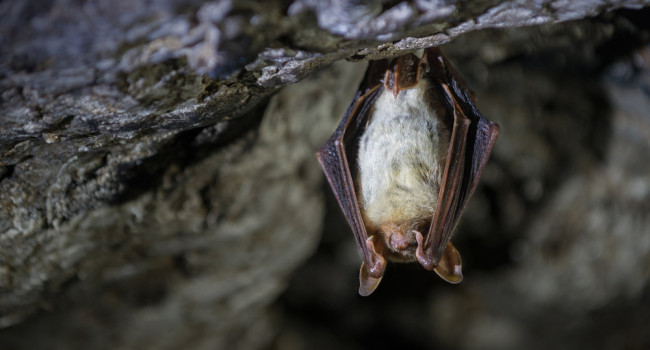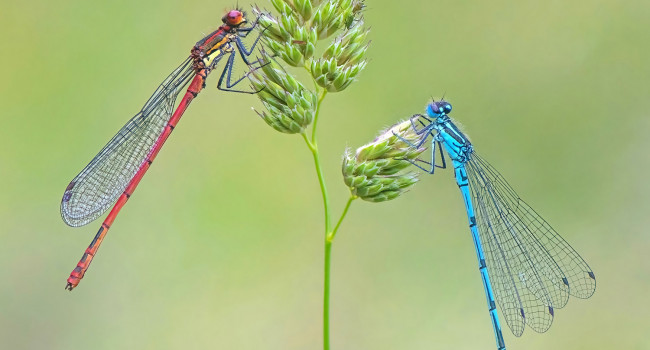Irregular silviculture positively influences multiple bat species in a lowland temperate broadleaf woodland
Author(s): Alder, D.C., Poore, A., Norrey, J., Newson, S.E. & Marsden, S.J.
Published: November 2020
Journal: Forest Ecology and Management
Article No.: 118786
Digital Identifier No. (DOI): 10.1016/j.foreco.2020.118786
Changes in woodland management have been linked to declines in birds and other wildlife but we know little about the impacts of such changes on our bat populations. All 17 of the bat species found breeding in the UK use woodlands and many are reliant on semi-natural broadleaved woodland. Because of the increasing pressures on our woodlands and their bat populations it is essential that we improve our understanding of how different types of woodland management affect their use by bats.
The study was carried out on the Rushmore Estate on Cranborne Chase in southern England and forms part of a wider biodiversity project overseen by Andy Poore, Forest Manager, Rushmore Estate and Prof. Stuart Marsden of Manchester Metropolitan University (MMU). PhD student at MMU and Lead author Danny Alder used special acoustic recorders to capture the echolocation and other calls made by bats using the study sites. Through this he was able to identify the species involved and could then measure their activity across the different woodland habitats. Danny collected data on the structural features of the woodlands, many of which are the result of the management practices used. Features like the degree of canopy cover, tree size, density of the understorey and the amount of standing dead wood can influence a woodland’s suitability to bats.
Eleven bat species were identified, including the rare Barbastelle, and there were clear differences between the different woodland management types in terms of both occupancy by bats and their activity. ‘Irregular High Forest’, a woodland type where the forest ecosystem is maintained intact by selective felling and characterised by its mixed-sized trees and complex structure, had the richest bat community and highest occupancy rates for most bat species, when compared to actively-coppiced stands and stands where interventions are very limited. Dr Danny Norrey of MMU produced the complex statistical models which helped shed light on the key differences in the habitats the bats were using.
The study demonstrates how features associated with Irregular High Forest stands, including deadwood, understorey structure, open canopy areas and larger tree size, seemed to benefit multiple bat species across different foraging guilds. Barbastelle – a low-level forager – was significantly associated with areas of more open canopy across all of the different stand management types, though with highest occupancy in the Irregular High Forest stands. The importance of this, and the other features highlighted, should be taken into account when considering how best to manage woodland for bats.
Abstract
Changing economics in the 20th century led to losses and fragmentation of semi-natural woodland in Britain and to a reduction in active woodland management with many becoming increasingly neglected, even-aged and with closed canopy. Lack of woodland management is known to contribute to declines in some taxonomic groups, for example birds. However, the response of bats to changes in woodland structure are poorly understood.
We compared two measures of bat activity, derived from static acoustic recorders across 120 sample plots in coppice, irregular high forest (uneven-aged, continuous cover) and limited intervention (under-managed, even-aged) management stands, within a large tract of ancient woodland in southern England. Bat species richness was highest in irregular high forest stands, and there were significant differences in occupancy rates for most bat species across stand management types. Coppice recorded low activity of several bat species and irregular high forest showed high occupancy rates, including for Barbastelle Barbastella barbastellus, which is IUCN listed as near threatened.
The occupancy rates in stand management types differed for some bat species between mid- and late summer counts, suggesting seasonal variation in habitat use. Within stands, most bat species were associated with opened canopy, lower growing stocks and reduced densities of understorey, and to a lesser extent, with large-girthed trees and presence of deadwood snags. In some cases, species responded to a given habitat variable similarly across the three stand management types, type, whereas in others, the response differed among stand management types. For example, increased numbers of large-girthed trees benefitted a number of bat species within coppice where these were least common, but not in irregular stands. Irregular silviculture high forest appears to provide many of the structural attributes that positively influence occupancy of several woodland bat species, including Barbastella barbastellus.






Share this page